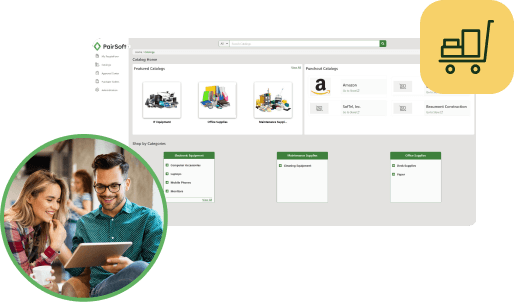
Janet Martin
Janet joined the PairSoft team upon its merger with Paramount Workplace, where she was also an integral part of the sales team for years. Janet resides in Michigan with her family.
View all posts by Janet MartinJanet Martin

Procurement is the business function concerned with acquiring (procuring) the goods and services that are vital to an organization. So, procurement is essentially the umbrella term under which you’ll find purchasing, sourcing, requisitions and purchase orders.
Procurement involves a number of steps, with each step in the procurement process presenting both risks and opportunities for efficiency gains. To add another term to the mix, the process of purchasing goods and services is often referred to as the Procure-to-Pay Cycle. The commonly acknowledged major steps in the cycle include:
A well-designed procurement process helps an organization:
Purchasing refers to the portion of the procurement cycle that is actively engaged in buying a product or service from a supplier. Think of purchasing as the transactional portion of procurement. If procurement is the subject, then purchasing is the verb. Tasks that directly relate to the process of how goods and services are ordered are purchasing while activities such as strategic sourcing and vendor contract negotiation constitute procurement.
Purchasing is a subset of procurement where the savings can really add up:
As the term implies, sourcing is concerned with finding the best supplier for goods and services. Sourcing is the subset of procurement that comes before any purchases are made. Here we can tack on another term: strategic sourcing. Strategic sourcing generally refers to a process of developing supply channels at the greatest value, not just the lowest purchase price. While it might sound simple, it is a broad and far-reaching subject. It’s noteworthy that there are certification programs and even degree programs available to teach the specifics of strategic sourcing.
Sourcing adds value to the procurement cycle:
These two terms are often used interchangeably, but they serve different purposes and are used in different stages of the procurement cycle.
While correct terminology is important, what’s more important is the understanding of the vital role procurement and its related sub-components play in the success of an organization.
Research shows that companies with high performing procurement organizations have profit margins 15% higher than the average company. Deloitte has found that strategic sourcing and procurement improvements can yield savings of 5-20% across multiple categories.
Becoming a high performing procurement organization first requires an understanding of how the elements of procurement work together and how each contributes to the overall success of the procurement function.
Related: Glossary of Terminology in Procure-to-Pay Lifecycle
Related: Integrating Purchasing and Payables
Talk to an expert today to uncover how your team’s procurement stacks up against the top performers in your sector.


